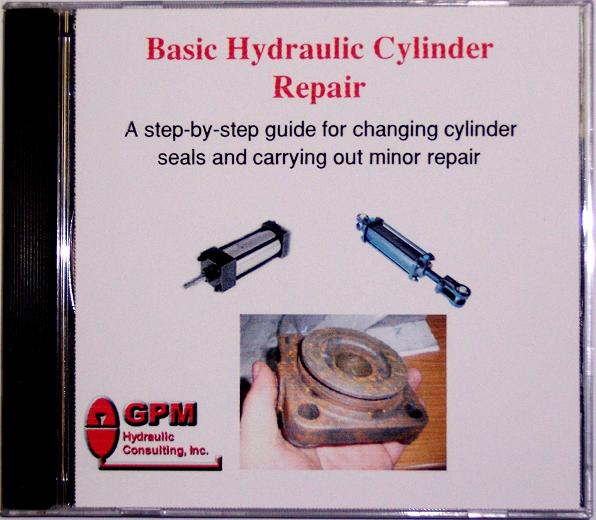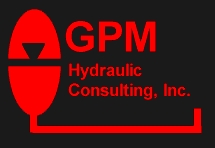
P.O. Box 1376
Monroe, GA 30656
(770) 267-3787 gpm@gpmhydraulic.com
For an archive of past newsletters, please visit:
http://www.GPMHydraulic.com/newsletter_archive/
CLICK HERE to send this newsletter to a friend!
|
'Troubleshooting Hydraulics' Newsletter |
||||
|
||||
|
In This Issue |
||||
1. Auditing Your Machines for Hydraulic Reliability 2. Call GPM for Emergency Hydraulic Troubleshooting 3. What is "Oxidation" of my Oil? 4. 2011 Public Hydraulic Reliability and Troubleshooting Workshop Schedule |
 By Jack Weeks
By Jack WeeksYour hydraulic machine often tells you when it needs attention. But most of us don't know what it is saying. Very seldom does a hydraulic system fail without first showing symptoms, so it is imperative that we know how to recognize them before an outage occurs.
Every plant I have ever visited keeps maintenance records. I can typically find out how many pumps, valves, feet of hose or pipe, filters and gallons of hydraulic oil that have been purchased in the past year and how much it all cost. But almost no facility keeps the kind of maintenance records that can uncover a trend that would predict an impending component failure. Regular hydraulic reliability auditing can give you an excellent idea of which parts are functioning well and which are badly worn and are at risk of causing an expensive outage. How many of you keep monthly records of the following?
| Temperature - The first symptom of wear on almost any hydraulic component is a temperature gain. Why is this? Well, for the most part, when a component begins to fail, it leaks. If it leaks onto the floor, it doesn't take a lot of hydraulic expertise to know that the component should be replaced. But usually it will leak internally. Internal leakage is called bypassing. Whenever bypassing occurs, there is a resulting pressure drop across the component. And whenever a pressure drop occurs that does not result in useful work being done, heat is generated. So an unusually high temperature gain across a component indicates wear. But how much is too much? In order to know, we must know how much is normal. It is a rare component that never has a pressure drop across it, and as the component wears, the pressure drop (and the resulting heat generation) increases. Some components are notorious heat generators because they always have significant pressure drops across them. Others normally have very little pressure drop and thus negligible heat generation unless they are badly worn. Do you know which components normally generate significant heat? And system temperatures can be affected considerably by ambient temperature, so we typically recommend monthly temperature checks of specific components so we have a record of what is normal in August and what is normal in January. | 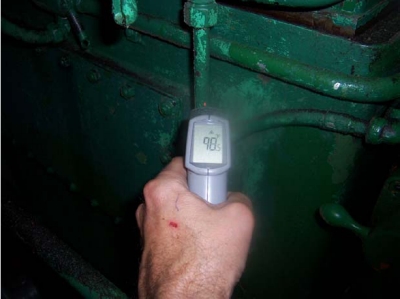 |
| System Pressures - Do you make regular checks of system pressures? Do you set pressures regularly? Most people don't. Most people only set system pressures when the machine is functioning abnormally. But it is wise to set pressures regularly to keep the machine functioning at its peak efficiency. Just because your machine is still making widgets does not mean that it doesn't require any attention. Do you know what all of your pressure gauges SHOULD be reading? If you don't, how can you know if your pressure settings are off? Another large benefit to setting pressures regularly - it keeps your hand in. I have seen hundreds of components that are never adjusted because no one is certain about the correct procedure. If you set pressures on a regular basis, it only takes a few minutes. But if it is months (or even years) between pressure settings, you have to go and get the book to remind you how to do it. | 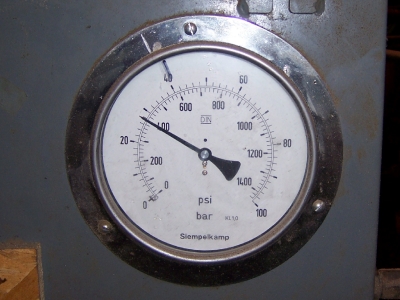 |
| Current Draw - When a machine loses efficiency, one place it shows is in the power bill. But seldom can we tell by the power bill which system is the culprit. Whenever the machine is working harder than it should, the drive motor will draw more current. But how can we know if the drive motor is drawing more current than it should unless we know what is normal? And remember that most machines do not draw a constant current - usually the current draw will change with the cycle of the machine. A machine at idle should have a relatively low current draw. The current should increase in direct proportion to the amount of work being done at any given time. And if a pump is badly worn, it won't draw as much current as it will when it is brand new. Do you know the normal current draw of all of your machines in every cycle of operation? Any significant change in current draw is cause for concern and one of the early warning signs of an impending failure. | 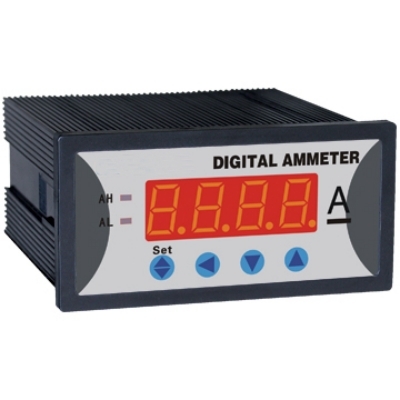 |
Most of these types of symptoms go unnoticed and result in a machine outage. Relatively inexpensive repairs then become costly losses of production. We are experts in the field of hydraulic reliability auditing and can custom design auditing procedures for a fraction of the cost of an outage. Contact Robin immediately at (770) 267-3787 or by email at GPM@GPMHydraulic.com to schedule your Hydraulic Reliability Audit. A consultant will visit your site, perform an initial audit and provide you with an illustrated, step-by-step document for performing your own audits with recommendations for frequency of auditing, where to make temperature, pressure and current checks, visual checks, sound checks and much more. Feel confident that you are making all of the hydraulic reliability checks necessary for YOUR machine.
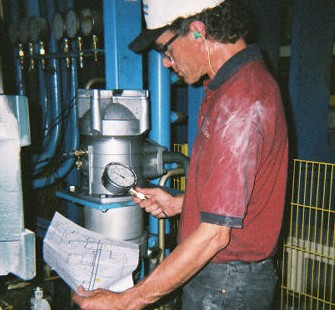
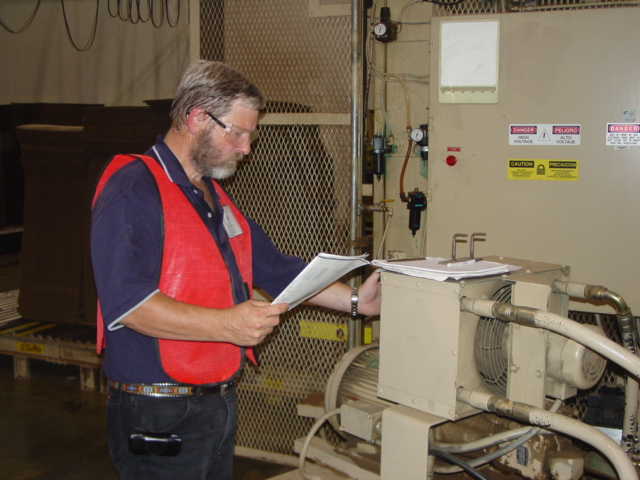
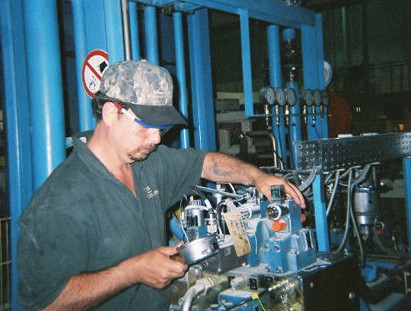
Nothing is more expensive than unscheduled down time. GPM’s customers know they can call whenever they have a troubleshooting issue they simply can’t resolve. With over 50 years experience dealing with hydraulic failures, our consultants have the resources to help troubleshoot whatever hydraulic problem you encounter. Whether you’re experiencing a total system outage, repeated component failure or just need a professionally designed preventive maintenance schedule, the consultants at GPM can help. Call GPM for
In-plant Troubleshooting
Leakage Problems
Pressure Settings
Shock Problems
Preventive
Maintenance Scheduling
Hydraulic Troubleshooting Manual Development
Startup
Consulting and Recommendations
Heat
Problems
Repeated
Component Failures
Speed Problems
Do you want to learn more about how GPM can help you? Go to http://gpmhydraulic.com/troubleshooting.htm
Briefly, oxidation is the chemical union of oil and oxygen. And many are surprised to learn that it is one of the primary causes of decreasing the stability of hydraulic oil. Once oxidation begins, a catalytic effect takes place and the resulting chemical reactions form acids that increase the oil viscosity and can cause corrosion. Polymerization and condensation produce insoluble gum, sludge and varnish that cause sluggish operation, increased wear, reduction of clearances and plugged lines and valves. Oxidation is not reversible, so once it begins, the only way to stop it is to replace the oil. The best way to deal with oxidation is to keep it from ever beginning.
Certain additives in the oil can help to keep it from oxidizing. Your oil vendor can ensure those additives are present. But oxidation can still occur if we create the conditions that cause it. There are six causes of oxidation:
- Temperature - All chemical reactions are accelerated by temperature and oxidation is no exception. Most mineral oil based hydraulic fluids should be kept at 140 degrees Fahrenheit or below, with an ideal operating temperature between 100 and 120 degrees Fahrenheit. The rate of oxidation will double every 18 degrees Fahrenheit above 140 degrees. While the oxidation may start in a localized area that gets quite hot, once the process begins, the catalytic effect causes it to accelerate throughout the oil. By keeping system temperature down, we can help to keep oxidation from starting or, once it has started, slow down the rate of oxidation.
- Pressure - The higher the pressure gets, the more the oil viscosity is increased. The increased viscosity results in an increase of friction and therefore raises operating temperature. The increase in temperature increases the rate of oxidation. Also, as pressure increases, so does the amount of entrained air (which contains oxygen). Additional oxygen will also accelerate oxidation.
- Contaminants - Dirt, moisture, pipe sealant and paint all contain chemicals that can accelerate the rate of oxidation. And contaminants that do not dissolve in the oil will settle to the bottom of the reservoir to form sludge. Sludge absorbs heat and slows the heat dissipation process of the reservoir surface area and heat exchanger causing an increase in oil temperature. Most people are surprised to learn that even a 1 percent sludge concentration can cause the fluid to oxidize in half the time it would take if there were no sludge present.
- Water - In addition to a host of other problems it can cause, water in the oil accelerates oxidation. Water contains some oxygen. An increase in pressure lowers the boiling temperature of water, breaking it down into its elements.
- Metals - Certain metals, such as copper, are catalysts for oxidation reactions, especially in the presence of water. As acids are produced during the initial stages of oxidation, the viscosity and neutralization number (a measure of the amount of acid contained in fluid - this is determined by the amount of potassium hydroxide the analyst must add to a sample of oil to neutralize the acid) increase. Your oil vendor can recommend additives called "metal deactivators" that can reduce the effects of metal catalysts..
- Agitation - Agitation of the oil is caused by aeration, cavitation and turbulent flow. Keeping suction strainers and filters clean, stopping aeration as soon as it is heard and ensuring proper pipe size can keep the oil from becoming agitated. Your oil vendor can also recommend additives called "chain breakers" that interrupt the oxidation reaction immediately after the reaction is initiated by agitation.
So the best way to fight oxidation is not to let it start. Keep your temperature down. Keep pressures set properly. Keep your oil clean and water-free by sampling, analysis, scheduled filter changes and regular system flushing. Work closely with your oil vendor to ensure that the proper additives are in your oil and verify by oil analysis that the additive levels are good. And if you hear the pump cavitate or aerate, take action immediately before destruction of the pump and oxidation can occur.
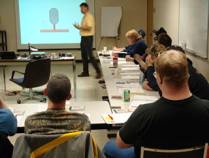
Hydraulic
Reliability and Troubleshooting 2011
3 Day Workshop
Registration
Fee Only $895.00 Per Person
Three
for the Price of TWO!
Every Third Registrant Attends for FREE!
Early Registration -
$845.00 For Confirmed Reservations
Booked 21 Days Prior to the Start of the Workshop
Call (770) 267-3787 To Register
Learn More About Our Hydraulic Reliability and Troubleshooting Course
2011 Hydraulic Reliability and Troubleshooting Schedule Coming Soon!
*Call If You Would Like To See A Workshop Scheduled In Your Area!
(770) 267-3787
If you've found our newsletter informative and beneficial please click here to tell your co-workers and friends.
A step-by-step guide for changing cylinder seals and carrying out minor repair. The manual contains disassembly, inspection of parts, minor repair, assembly, examples of seal failures and their causes, hydraulic cylinder speeds, metric/inch conversion table, fluid power formulas, rod and piston groove diameters.
$24.99 + Shipping & Handling
Site Index
[Home] [Our Training] [Hydraulic Consulting] [Safety Webinars] [System Flushing] [Our People] [Downloads and Multimedia] [Testimonials] [Hydraulics Quiz] [GPM Store] [Upcoming Events] [Contact Us]
GPM Hydraulic Consulting,
Inc.
Box 1376
Monroe, GA 30655
(770) 267-3787


